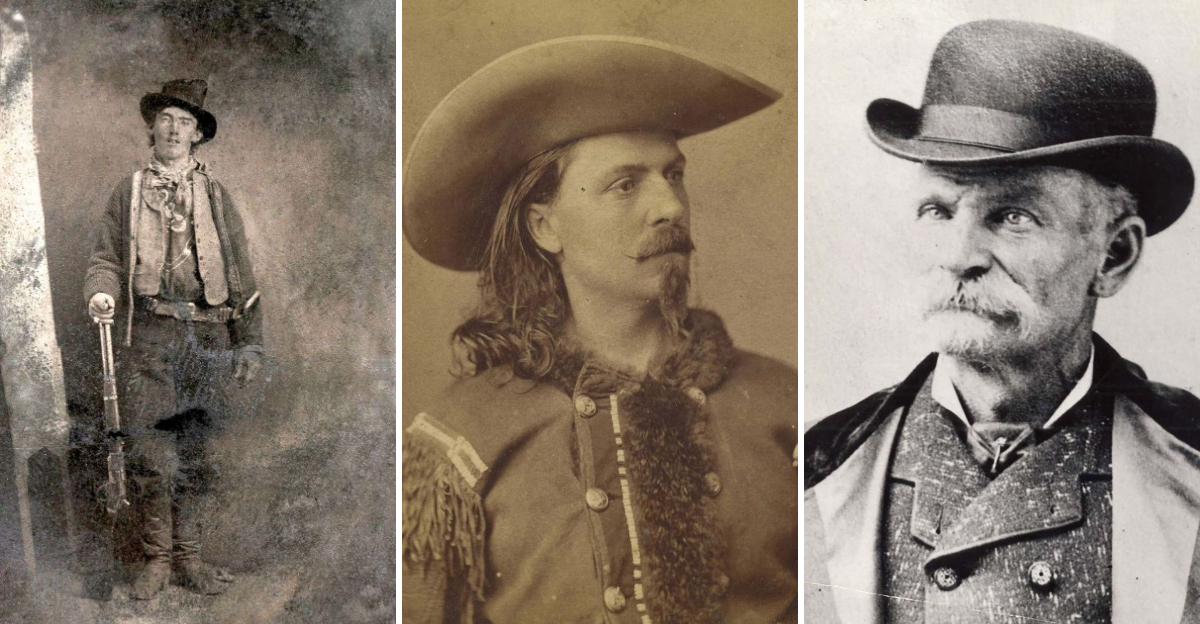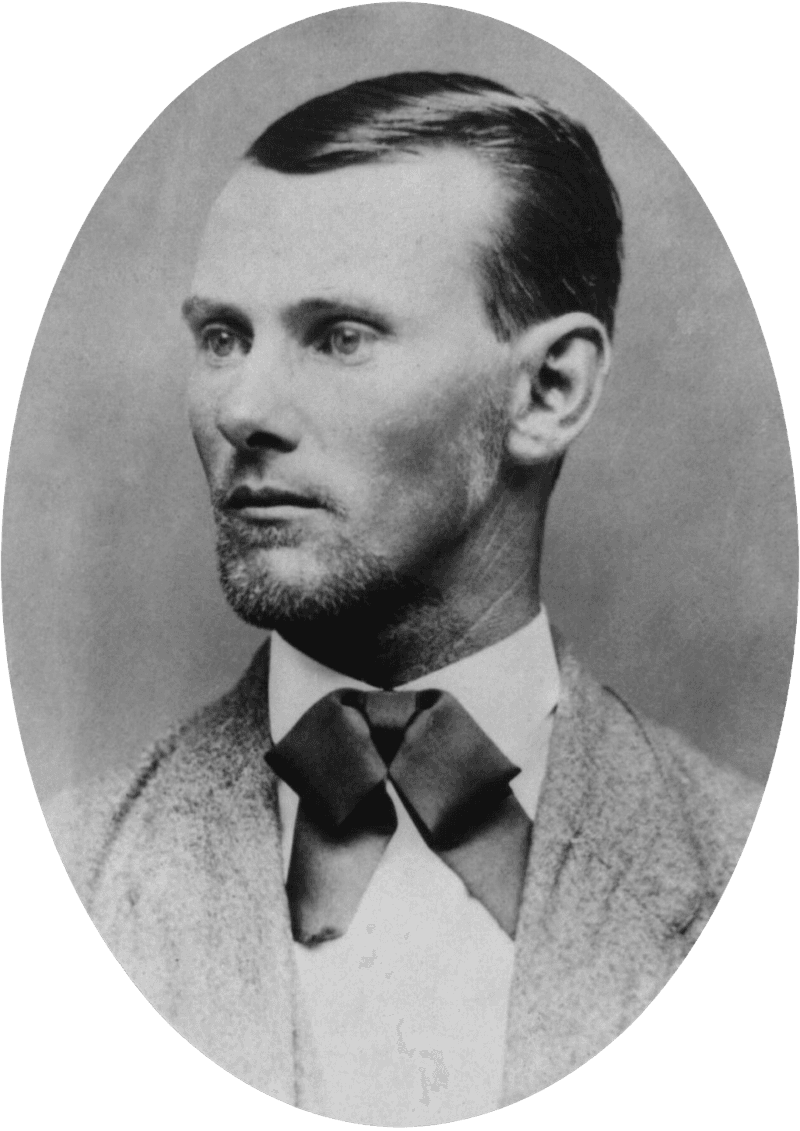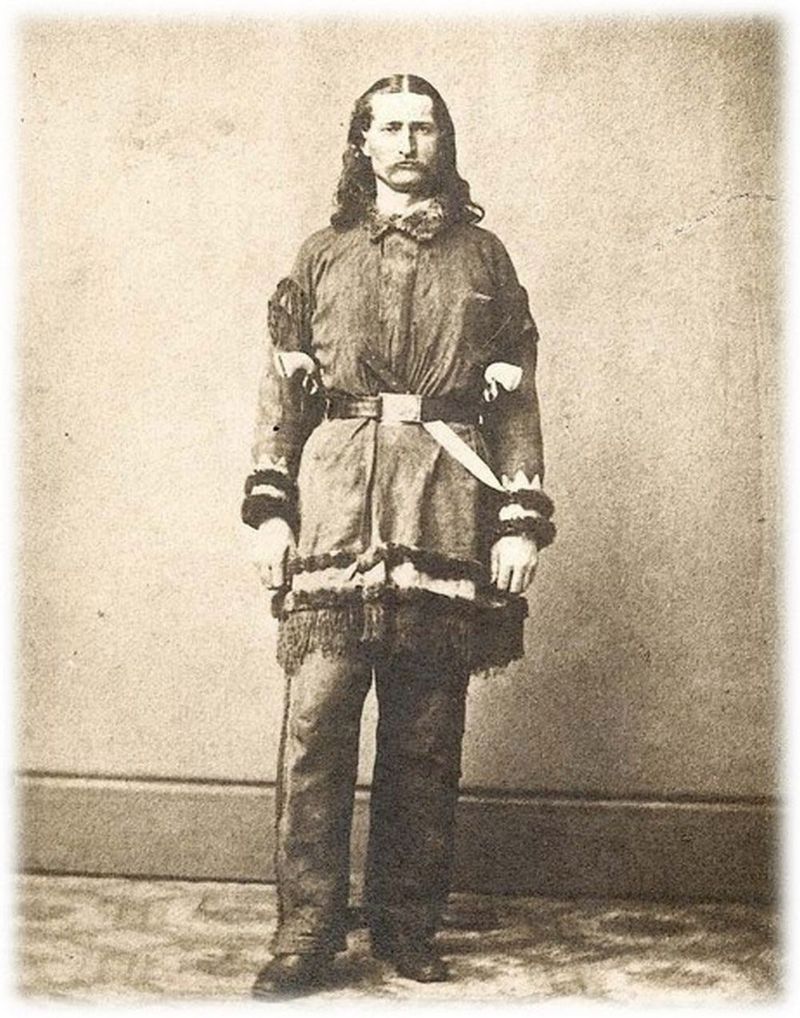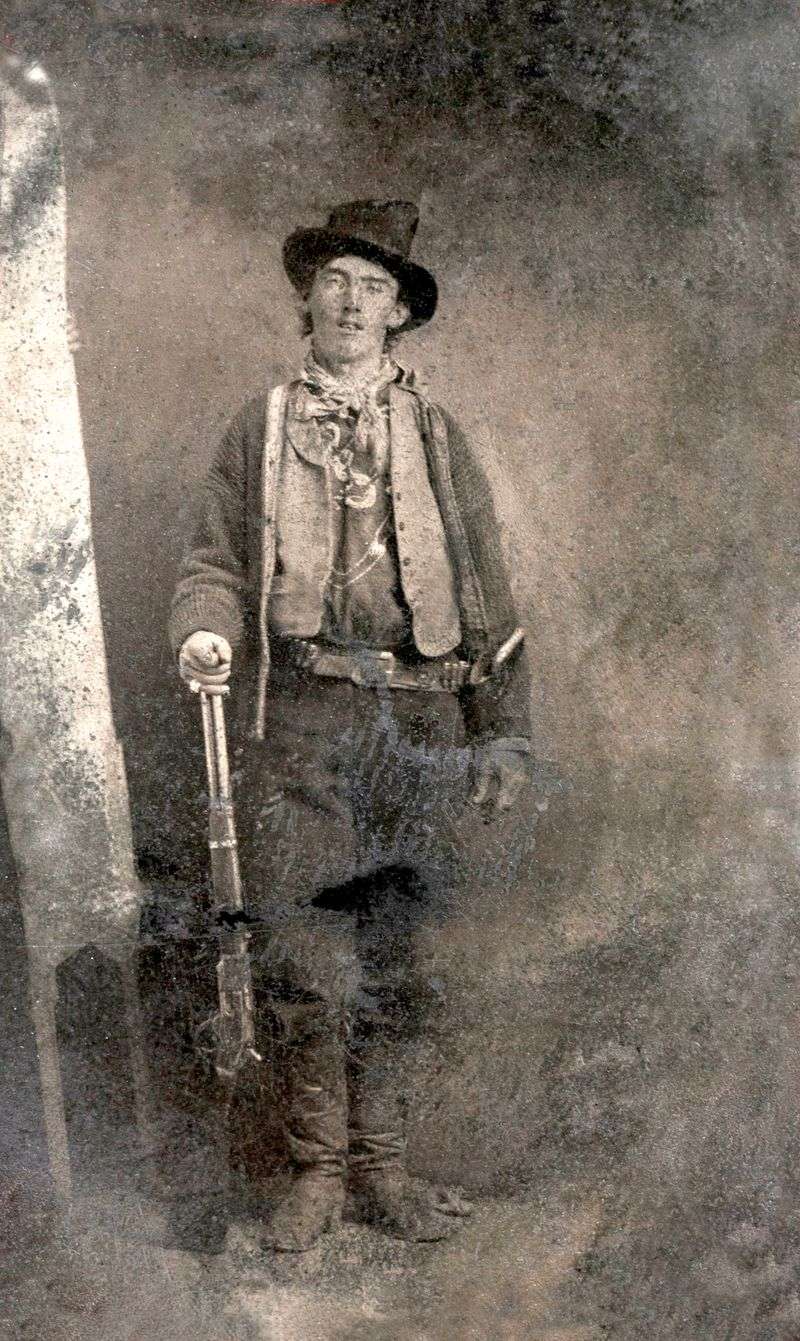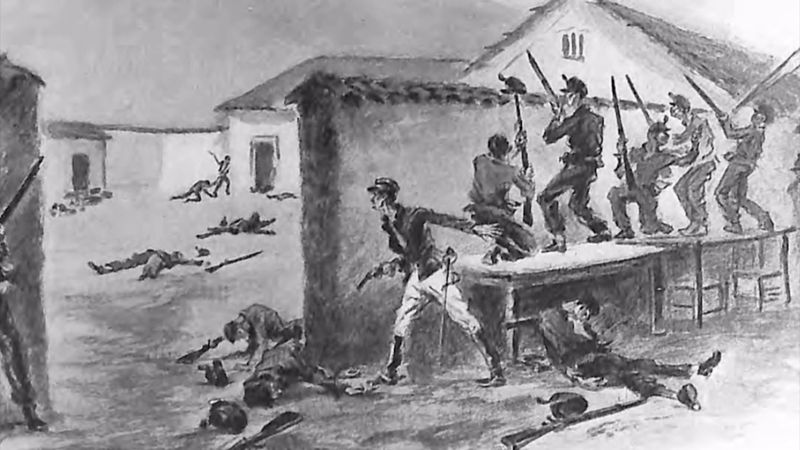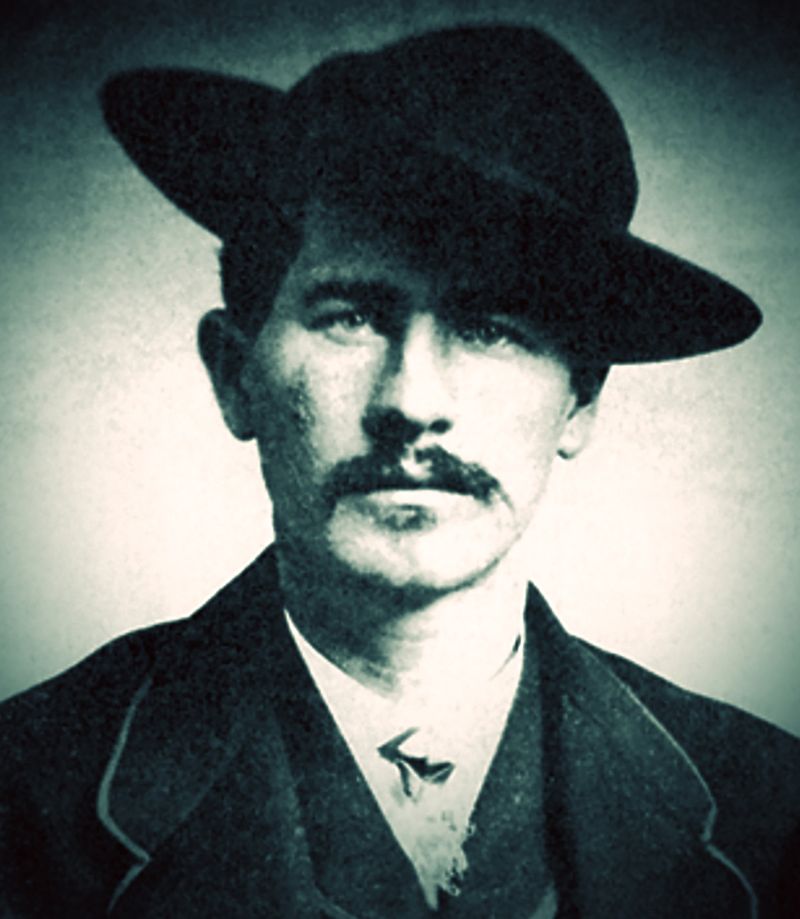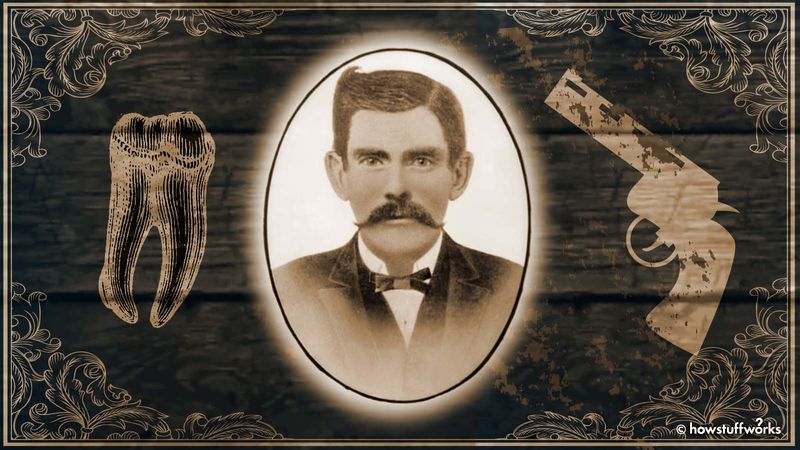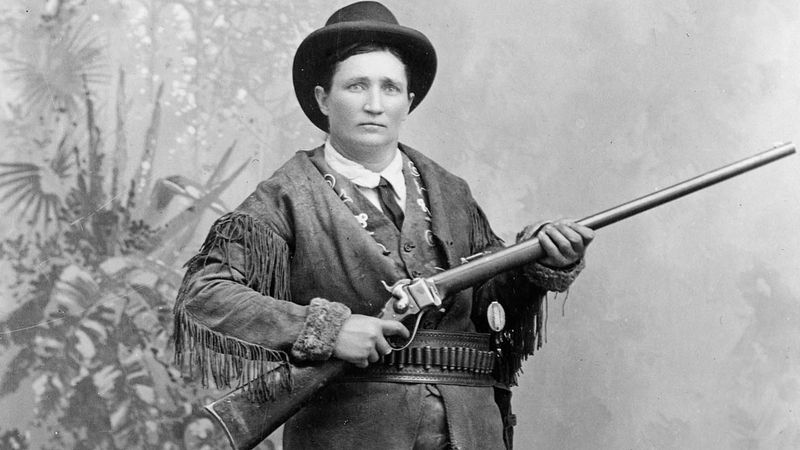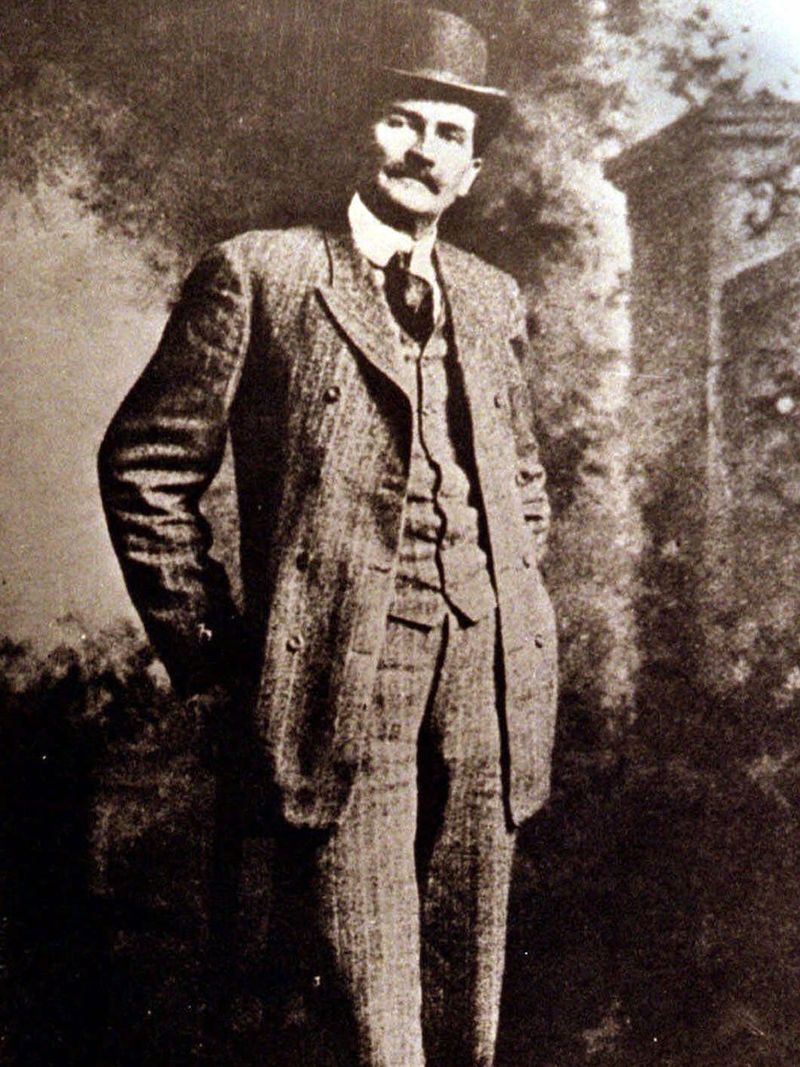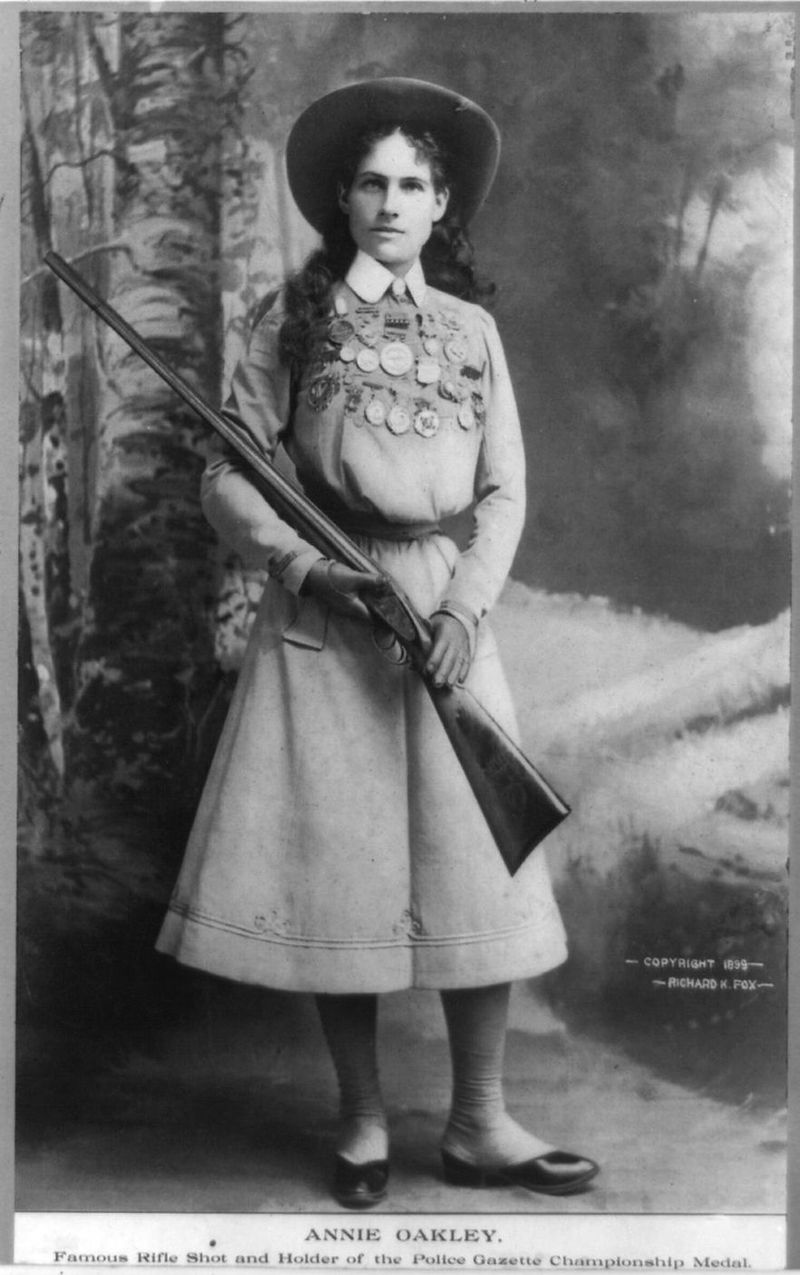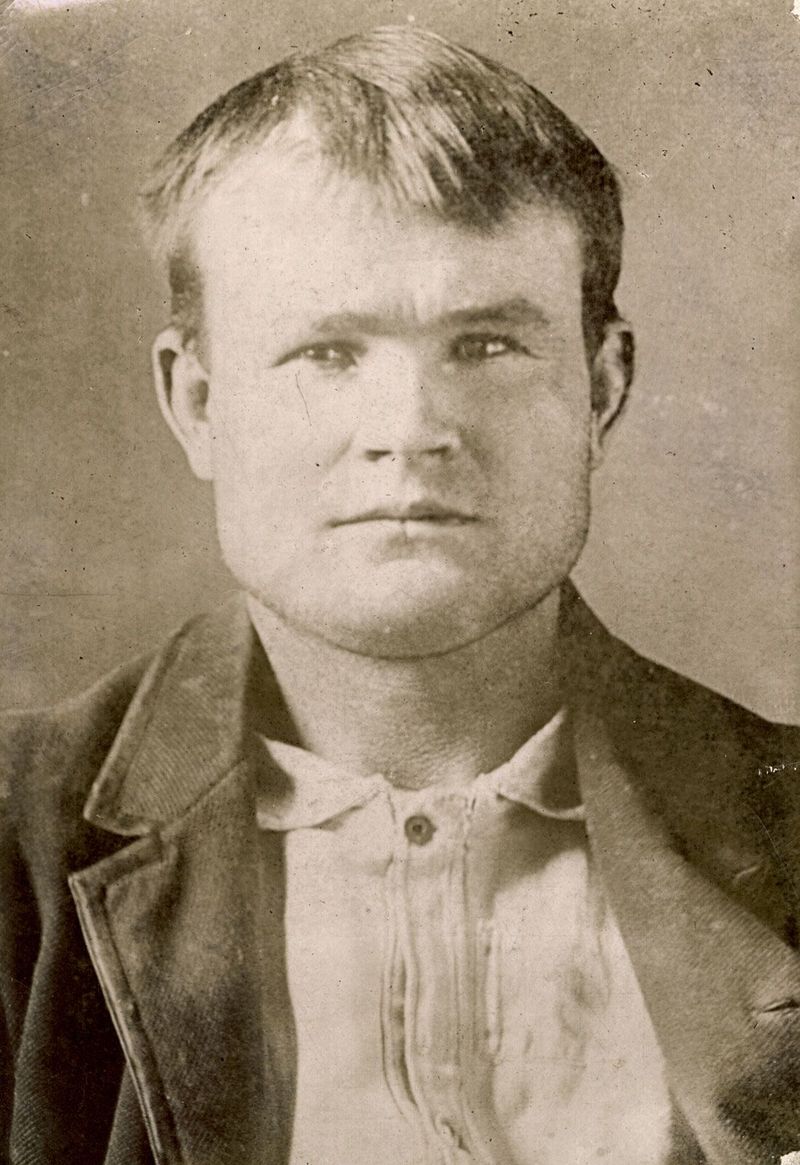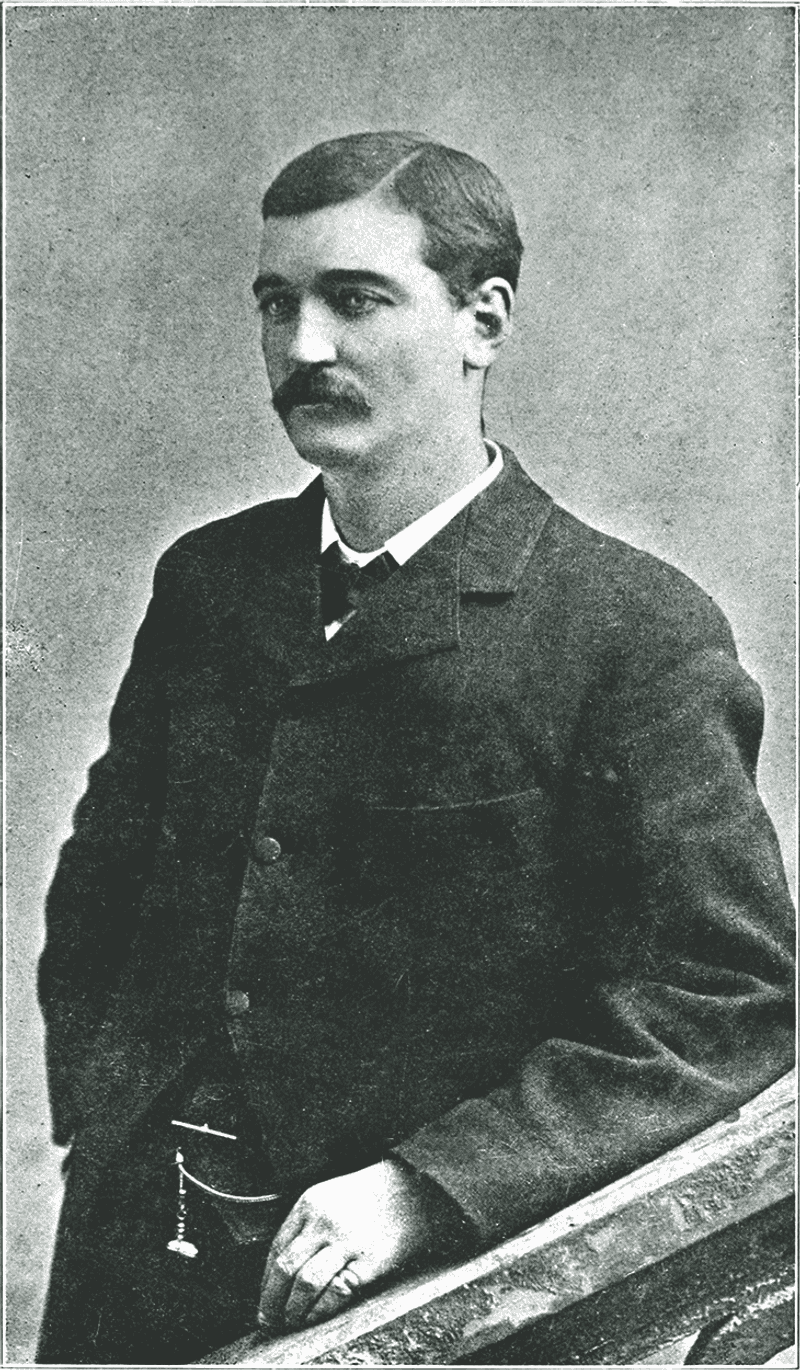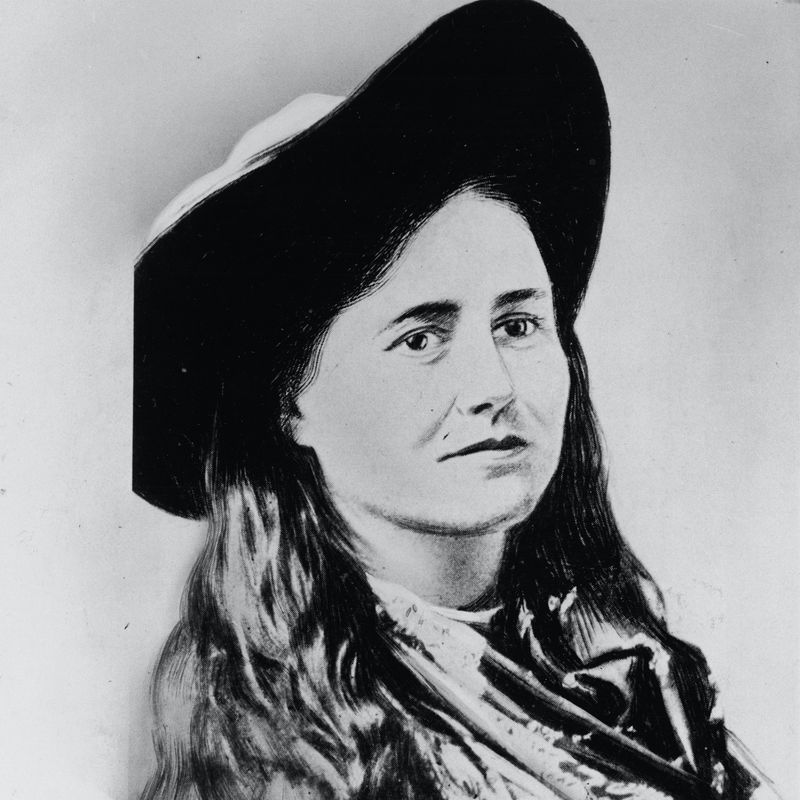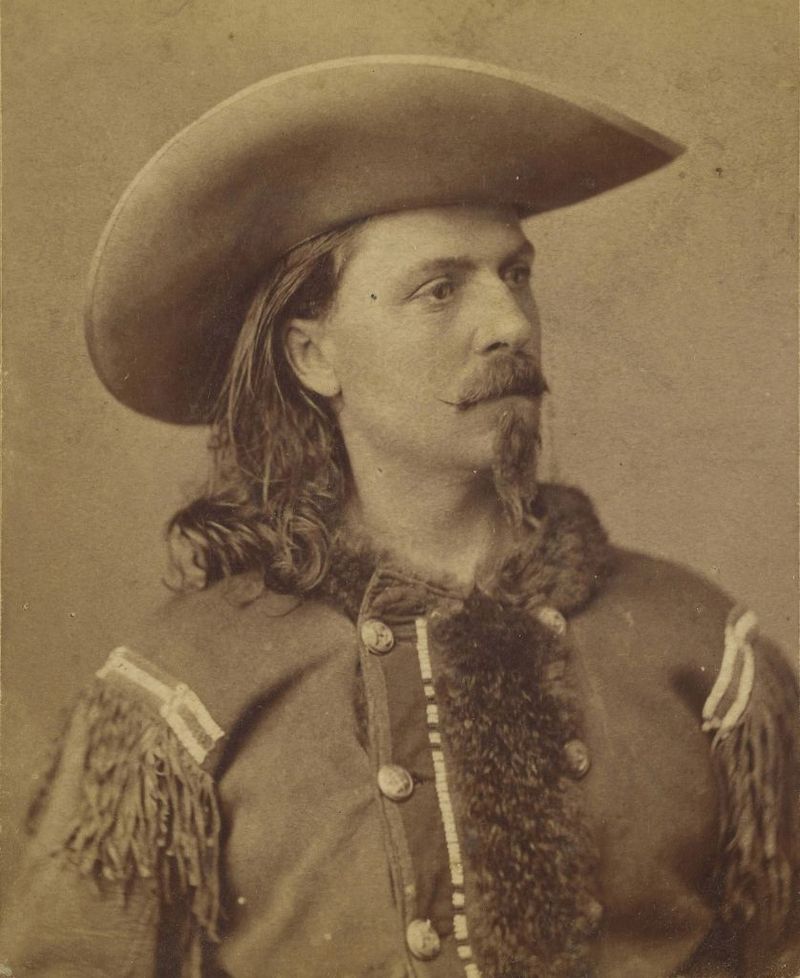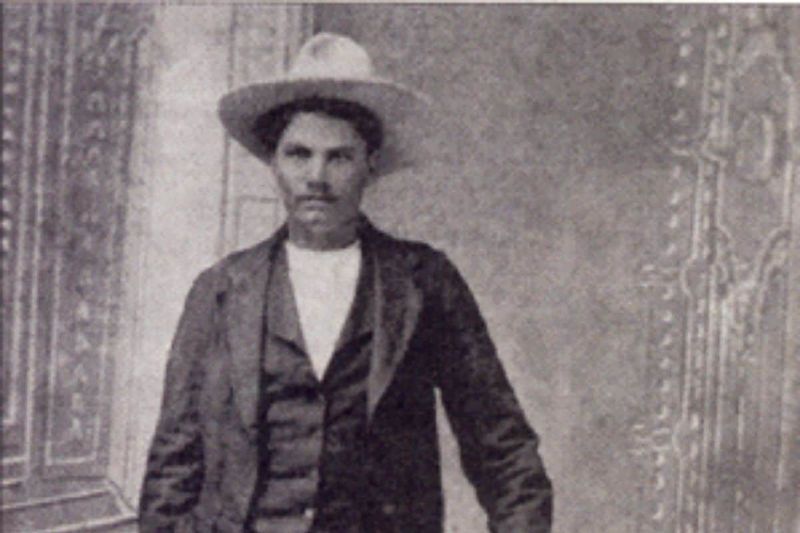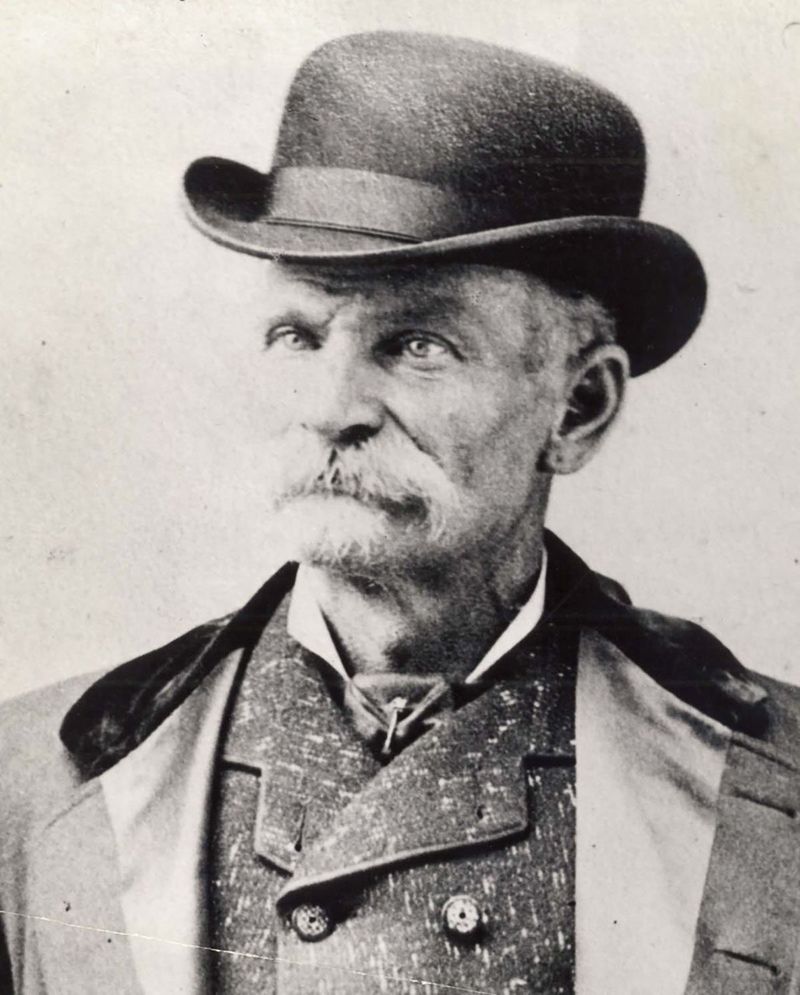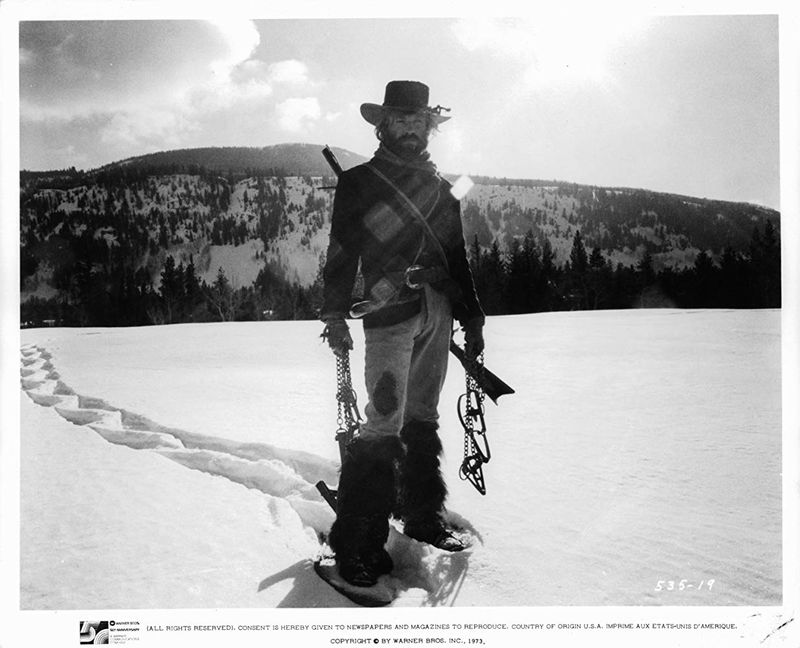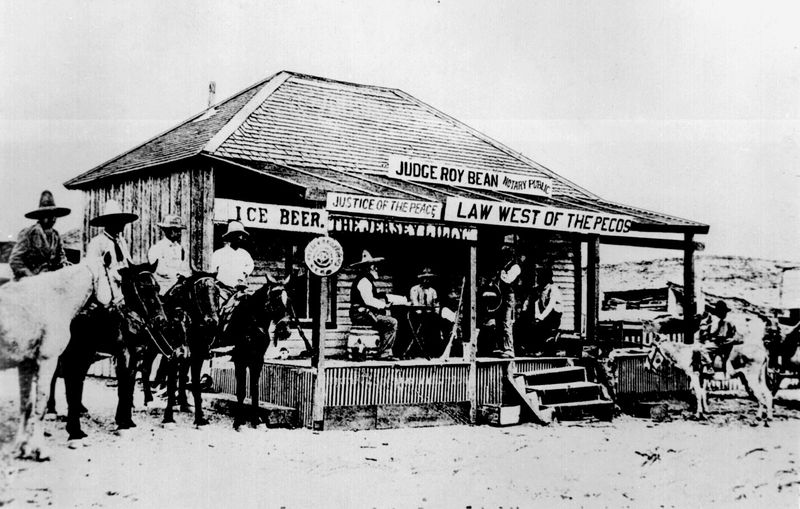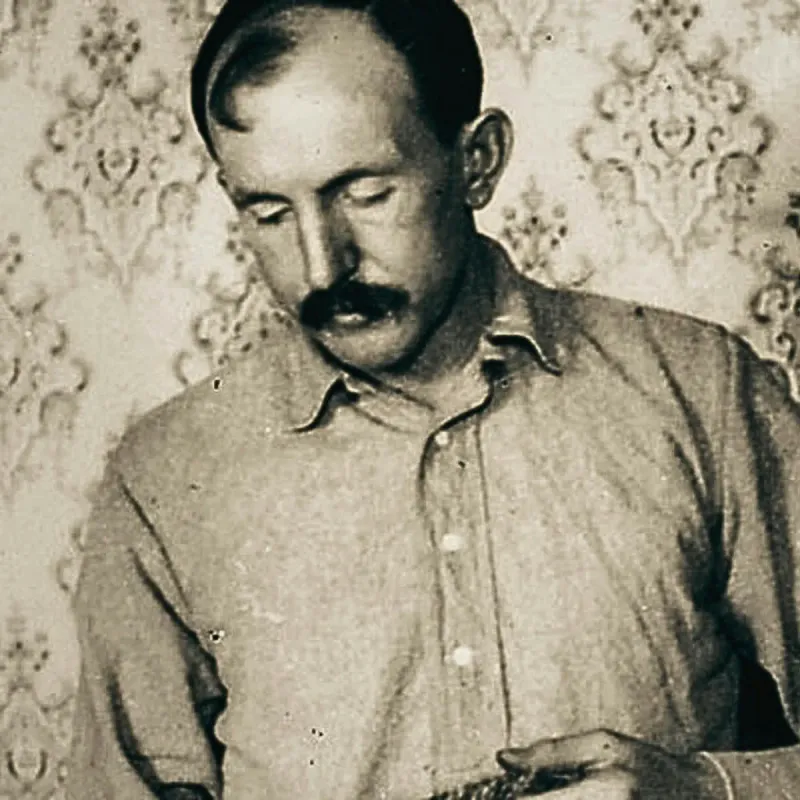The Wild West, a period in American history filled with lawlessness and legend, has long fascinated storytellers and historians alike.
The rugged landscape and untamed territories were home to larger-than-life characters whose lives were often as tumultuous as the land they roamed.
This blog post delves into the shocking deaths of 19 iconic figures from this era, each with their own captivating tale.
From infamous outlaws to legendary lawmen, these stories reveal the often grim and gritty reality of life—and death—in the Wild West.
1. Jesse James
Jesse James, the notorious outlaw, met his end at the hands of a trusted associate. In April 1882, James was living under an alias in Missouri. He was adjusting a picture frame on the wall when Robert Ford, a member of his gang, shot him from behind.
The betrayal was motivated by a bounty on James’ head. Ford’s act of treachery marked the end of an era for one of America’s most infamous outlaws.
Though his life was filled with crime, his death was a stark reminder of the harsh realities of loyalty and greed in the Wild West.
2. Wild Bill Hickok
Wild Bill Hickok was a legendary gunslinger known for his sharp shooting and daring escapades. In August 1876, while playing poker in Deadwood, South Dakota, he was shot in the back of the head by Jack McCall.
Hickok was holding a pair of aces and eights, which became famous as the “Dead Man’s Hand.” The motive for the murder remains a mystery, with theories ranging from revenge to random malice.
Hickok’s sudden death shocked the frontier community and immortalized him as one of the Wild West’s most iconic figures.
3. Billy the Kid
Billy the Kid, the infamous outlaw, was a young man with a reputation for both charm and violence. In July 1881, Pat Garrett, the sheriff of Lincoln County, tracked him down to a ranch in Fort Sumner, New Mexico.
Garrett shot Billy in the dark, ending the brief but turbulent life of the Kid. His death was the culmination of a relentless pursuit by lawmen eager to bring justice to the frontier.
Billy’s legend endures, symbolizing the reckless spirit and tragic fate of many who lived on the edge.
4. Butch Cassidy
Butch Cassidy, leader of the Wild Bunch, met his mysterious end far from the American West. In 1908, he and the Sundance Kid were allegedly killed in a shootout with Bolivian soldiers.
The details remain shrouded in mystery, with rumors that Cassidy may have escaped. Though the exact circumstances of his death are debated, his life of robberies and daring escapes left a lasting mark on Western folklore.
Cassidy’s tale reflects both the adventurous and perilous nature of outlaw life during this tumultuous period.
5. Wyatt Earp
Wyatt Earp, a famed lawman, lived long enough to see the myth of the Wild West grow. He died peacefully in 1929, far removed from his days of gunslinging and law enforcement.
Earp’s most notable moment was the Gunfight at the O.K. Corral, which defined his legacy. Though he avoided the violent death that many of his contemporaries faced, Earp’s life was filled with the tension and danger of frontier justice.
His passing closed a chapter on an era characterized by rugged individuality and the relentless pursuit of justice.
6. Doc Holliday
Doc Holliday, a notorious gambler and gunfighter, succumbed to tuberculosis in 1887. His life was marked by a deadly mix of intellect, charm, and violence.
Holliday was known for his role in the Gunfight at the O.K. Corral alongside Wyatt Earp. Despite a life of high stakes and frequent danger, he died quietly in a Colorado hotel, far from the chaos of his earlier years.
Holliday’s death symbolized the inevitable decline of even the most legendary figures of the Wild West, offering a somber reflection on mortality.
7. Calamity Jane
Calamity Jane, famed for her rough-and-tumble lifestyle, died in 1903, leaving behind a legacy of adventure and myth. Known for her exploits in the Dakota Territory, she was a friend and admirer of Wild Bill Hickok.
Her life was a blend of fact and fiction, fueled by her storytelling prowess. Jane’s death in poverty and obscurity was a stark contrast to her larger-than-life persona.
Her story is a testament to the wild and unpredictable nature of life on the frontier, where survival often depended on wit and resilience.
8. Pat Garrett
Pat Garrett, the lawman who famously shot Billy the Kid, met a mysterious end himself. In 1908, he was found dead on a remote road in New Mexico, an apparent victim of murder.
The circumstances surrounding his death remain unsolved, with theories pointing to land disputes or personal vendettas.
Garrett’s life was defined by his pursuit of justice in a lawless land, yet his own demise was shrouded in the very chaos he sought to control. His story underscores the perilous balance between law and disorder in the Wild West.
9. Annie Oakley
Annie Oakley, the sharpshooting sensation, captured hearts with her extraordinary talent. She passed away in 1926 after a lifetime of breaking barriers and thrilling audiences.
Though not a conventional Wild West figure, Oakley’s prowess with a rifle earned her a place among the legends. Her death marked the end of an era in entertainment, where skill and showmanship reigned supreme.
Oakley’s life story inspires those who dare to challenge societal norms and excel in their chosen fields, reflecting the diverse tapestry of the Wild West.
10. Sundance Kid
The Sundance Kid, partner to Butch Cassidy, shared a similar fate in Bolivia. In 1908, both outlaws were believed to be killed in a gunfight with authorities, though details remain uncertain.
The mystery of their deaths adds to the allure and speculation surrounding their lives. Sundance’s story, full of adventure and defiance, embodies the rebellious spirit of the Wild West.
His life and unexpected end highlight the thin line between legend and reality, captivating those who romanticize the era’s daring escapades and notorious figures.
11. Bat Masterson
Bat Masterson, a famed lawman and gambler, transitioned from the Wild West to a quieter life as a sportswriter in New York. He passed away in 1921, leaving behind tales of frontier justice.
Masterson’s career spanned various roles, from sheriff to U.S. Marshal, each marked by courage and controversy. His peaceful death contrasted sharply with the violent lives of many contemporaries.
Masterson’s journey from gunslinger to journalist reflects the shifting landscapes of both the American frontier and personal identity, offering insights into the complexities of life beyond the Wild West.
12. Belle Starr
Belle Starr, the “Bandit Queen,” lived a life of crime and intrigue. In 1889, she was ambushed near her home in Oklahoma, shot in the back by an unknown assailant.
Her death remains a mystery, with suspects ranging from jealous lovers to fellow outlaws. Starr’s life was a testament to defiance, challenging societal norms while carving her niche in a male-dominated world.
Her untimely end reflects the dangers faced by those who dared to defy convention, leaving a legacy of rebellion and resilience that continues to inspire.
13. Buffalo Bill
Buffalo Bill Cody, a legendary showman, passed away in 1917, after a life spent popularizing the Wild West. His traveling show captivated audiences worldwide, blending myth and reality.
Though not a traditional outlaw or lawman, Cody’s influence on the era’s image is undeniable. His death marked the end of an iconic figure who shaped perceptions of the frontier.
Buffalo Bill’s legacy lies in his ability to transform history into entertainment, reflecting the enduring fascination with the Wild West’s drama and romance, even in modern times.
14. John Wesley Hardin
John Wesley Hardin, one of the deadliest gunslingers, died in 1895 in a saloon brawl in El Paso, Texas. Known for his volatile temper, Hardin’s life was riddled with violence and infamy.
His death came as he was shot in the back of the head, a fitting yet tragic end for a man who lived by the gun. Hardin’s story underscores the brutal reality of the Wild West, where survival often depended on one’s ability to outgun rivals.
His life and death remain a chilling reflection on the volatile nature of frontier existence.
15. Black Bart
Black Bart, the gentleman bandit, was known for his polite demeanor during stagecoach robberies. His mysterious disappearance in 1888 fueled speculation about his fate.
Legend has it that he simply vanished, leaving behind a life of crime. Despite his criminal activities, Bart’s courteous manner made him a folk hero.
His story highlights the complexities of moral ambiguity in the Wild West, where lawlessness intertwined with personal codes of conduct. The enigma of Black Bart’s end adds intrigue to his tale, embodying the unpredictable nature of frontier legend.
16. Liver-Eating Johnson
Liver-Eating Johnson, a mountain man shrouded in myth, died peacefully in 1900. Known for his gruesome vendetta against the Crow tribe, his life was a blend of fact and legend.
Johnson’s fierce reputation was tempered by stories of his survival skills and solitary lifestyle. Though his nickname evokes a savage image, his death in a veteran’s home painted a different picture—one of quiet reflection.
His life serves as a reminder of the harsh yet awe-inspiring frontier, where survival was paramount, and legends often grew from grains of truth.
17. Judge Roy Bean
Judge Roy Bean, the “Law West of the Pecos,” passed in 1903, leaving behind a legacy of unconventional justice. Operating from his saloon, Bean wielded the law with humor and eccentricity.
His rulings were often based on personal whim rather than strict legal codes. Bean’s death marked the end of an era where frontier law was a blend of practicality and personality.
His life exemplifies the rugged individuality of the Wild West, where authority figures carved their paths amidst chaos, offering a glimpse into the colorful tapestry of frontier life.
18. Clay Allison
Clay Allison, a notorious gunfighter, met his end in 1887 in a freak accident. Known for his volatile temper and skill with a gun, Allison was a feared figure across Texas.
While driving cattle, Allison fell from his wagon and was run over, a mundane demise for a man of such ferocity. His unexpected death highlights the randomness of life on the frontier, where even the most formidable could fall to simple misfortune.
Allison’s life and abrupt end reflect the unpredictable and often ironic nature of existence in the Wild West.
19. Tom Horn
Tom Horn, known as a skilled tracker and detective, met a controversial end at age 42. Accused of murdering a 14-year-old sheepherder, Horn was convicted and hanged in 1903. His execution remains a subject of debate, with many questioning the evidence against him.
Horn’s career was marked by his expertise in tracking and his association with cattle barons. His story continues to spark discussions about justice in the Wild West.
